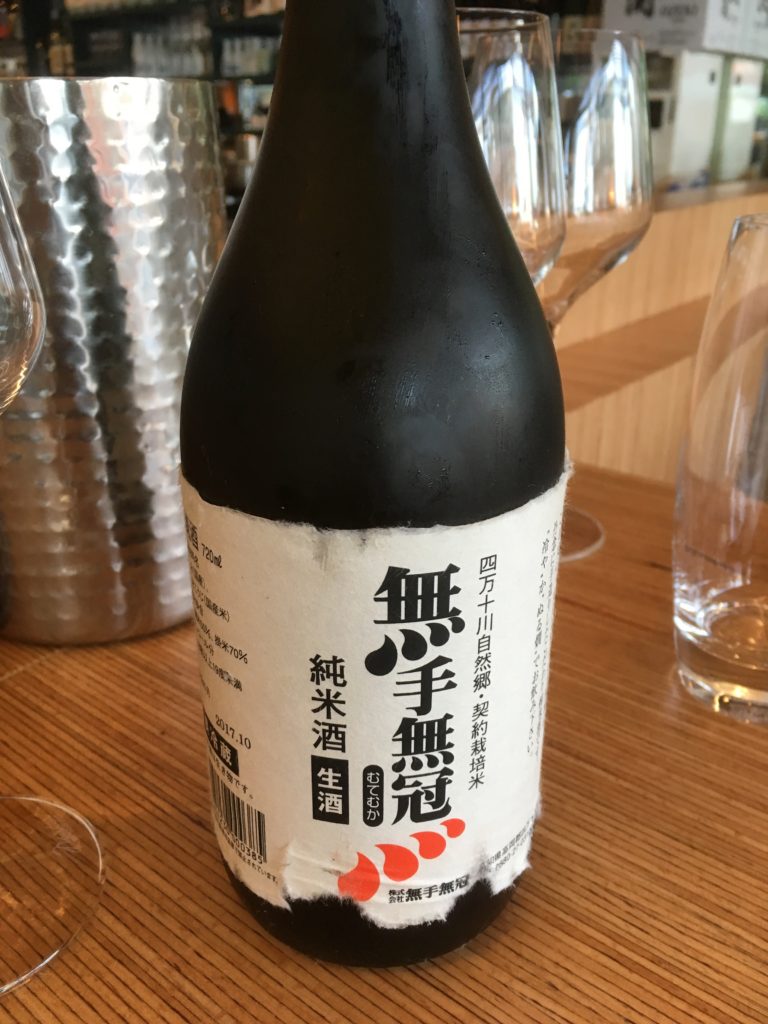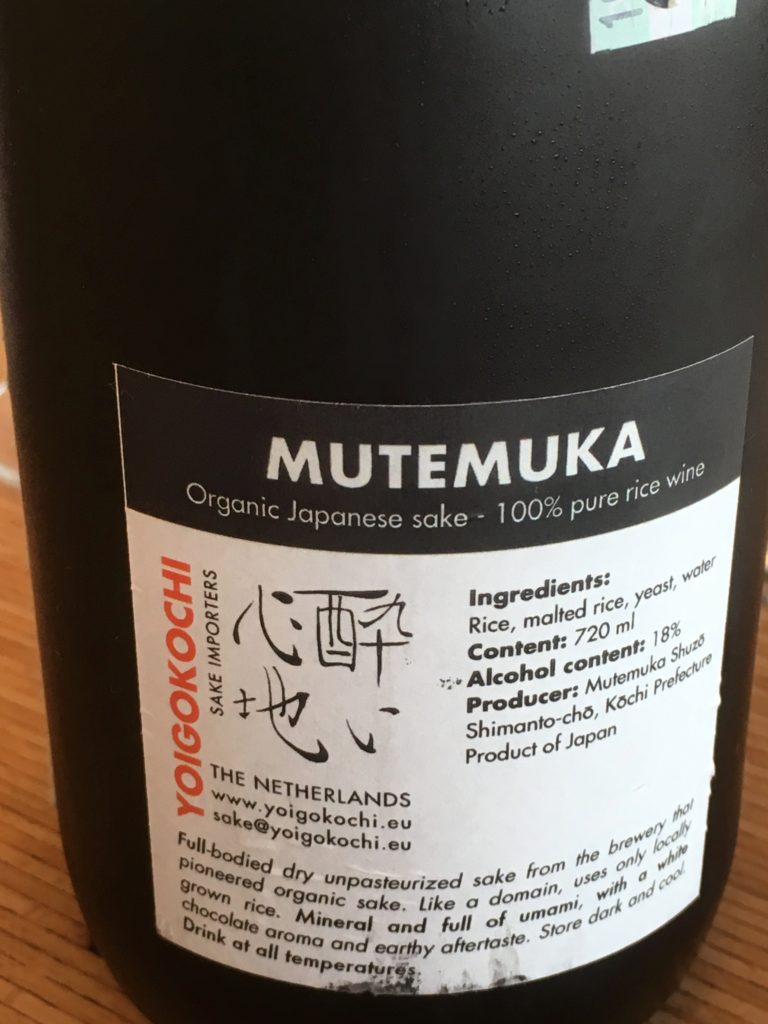
It’s such a shame. Le Blossom in Montreal’s gay village has 50% off all bottles of sake every Sunday night, and nobody seems to know about it.
That’s not the sad part, though.
The sad part is that I can’t go for at least another three weeks. I’m doing this detox to clear my liver, lymph nodes and kidneys of environmental poisons. Nothing in particular is poisoning me, but living in a city with stress and air pollution and chemicals everywhere, your liver can take a beating, says my naturopath. I’m in it for better digestion, but a liver cleanse is probably a good thing in my line of work, especially when I keep having digestive issues.
It was supposed to be a 30-day detox, but I got an eye infection smack in the middle (week two is the worst), so I had to do the hard week again, plus the two remaining weeks, and in that week when I was taking antibiotics for my eye infection (as much as I don’t like antibiotics, you don’t mess around when it comes to your vision…), I was still eating the week 1 diet, to make the transition back onto the diet after the antibiotics easier.
METAGENICS DETOX SIDE EFFECTS
If you go too quickly into having two scoops of this rice-based powder three times a day (the hard week), your stomach will not feel awesome. I thought it was just really heavy, but according to this video, it can just be your body churning up a bunch of muck before eliminating it. I also really started missing things I normally wouldn’t crave, like pasta, even though I’d had brown rice pasta (100% organic brown rice from Riztopia) with a homemade roasted tomato sauce in my antibiotics week, which was allowed.
Know what generally does make my stomach feel awesome? Unpasteurized sake!

I did manage to have this bottle of Mutemuka Muroka Nama Genshu (muroka = non-carbon filtered; nama = unpasteurized; genshu = non-diluted with water) with friends at Blossom Bar in Montreal the day before I started the detox. Go out with a bang, I figured. It’s probiotic since the fermented rice beer (that’s essentially what sake is, but with sake yeast – inoculated rice that becomes koji plus specific strains of yeasts added later) has all its beneficial digestive and flavour enzymes. It’s almost healthy. Sure, all that (natural) sugar is still a lot of sugar, and it’s high alcohol at 18%, but it’s close as I’ll be getting to a white chocolate milkshake for a long time. Even after the detox, I still won’t be eating cacao any time soon.
And that’s the crazy thing about this sake: it really does smell like white chocolate. The malted rice (in this case it’s rice malt, not barley or wheat, so it’s gluten free) adds an earthy sweetness. And it kind of melts onto your tongue like a rice-based vegan ice cream and the flavour dissolves the same way – there’s no long, luxurious finish – but that just makes you want to take another sip.
ABOUT MUTEMUKA BREWERY
Mutemuka Brewery is in Kochi Prefecture on the island of Shikoku (you might have heard of the island’s oysters). It was founded in 1893 next to the source a pure river called the Shimanto-gawa. It’s always been chemical-free, but in 1988, the brewery changed its name from Shinto-Gawa to Mutemuka, which means “No hand, no crown” to reflect the hands-off approach to sake brewing (like the natural wine approach). For more info and a picture, check out the Skurnik wine importers website. The Mutemuka site is in Japanese, but I did understand that they also make a chestnut shochu, a distilled rice and chestnut liqueur – essentially a distilled sake with chestnuts.
SAKE YEASTS AND FLAVOUR
I made sake once and these aromas really depend on the strains of yeast added. Sake breweries will have a koji room that the general public can’t enter. They don’t want to mess up the delicate balance of bacteria that gives each sake line its unique flavours and aromas. Then, once the sake is fermented with the koji added, they’ll add specific strains (named yeast #7 and yeast #9, for example) either purchased from local breweries known for their yeast production or online (I bought a couple for my sake, like home beer brewers or wine makers buy commercial yeasts, creating generally lower quality but more consistent results).
HOW TO ORDER THIS SAKE
This Mutemuka is special, though. It’s organic, for once. And it’s private import, which means one guy is bringing it in and selling it to the restaurant. He’s also selling it to individuals in its smaller size (300 mL instead of 720 mL) at $16.65/bottle (plus tax), but you have to buy 12 because that’s the size of the case. So $199.80 plus tax. I’m buying one of these and splitting it with friends. He has some other namas (unpasteurized) I’ve requested, so he’s checking availability and I’ll hopefully get them later this fall. Contact me if you want to either join my order or be in touch with the importer yourself.
THE TASTE
If you think you don’t like sake, you need to try this one. I would never drink this warm, even though it says to drink at all temperatures. It would mute the white chocolate aroma and mask the flavour, I feel. It would also increase the alcohol taste and effect, but when served cool, it doesn’t taste “hot” (aka high alcohol) or burn when you swallow, because there’s just enough natural sweetness in there.
If you want to read more about the different types of sake that exist, how they’re made, the traditions surrounding them and how to drink and enjoy them, check out Sake Confidential: A Beyond-the-Basics Guide to Understanding, Tasting, Selection, and Enjoyment by John Gauntner. It’s an easy-to-read intro to all things sake by the first North American sake sommelier. It’s my go-to reference book when I forget the differences between and overlapping aspects of genshu and junmai and honjozo.
You can also watch this sake documentary on Netflix, about a year in the Yoshida Brewery, which follows old-school production methods. the workers leave their families twice a year in autumn and spring for the sake brewing seasons. They live together in the brewery – men only – perfecting the sake day and night. That doesn’t mean it’s hard physical labour 24/7, but there’s always something to do, to check and to adjust. It’s Japan, so they’re perfectionists and traditionalists. It’s also very interesting to learn about the marketing challenges for such a labour-intensive product. It’s not as easy a sell as you might think.
In the meantime, get to Le Blossom Bar to try one of their handful of nama sakes for yourself. Or try one of the excellent pasteurized ones because 50% off $100 is a huge discount. There won’t be a new order of nama arriving at the restaurant until later in the fall, though, so drink what they’ve got before it’s all gone. I’d help if I could.
Dreaming of tomato sauce pasta and unpasteurized nama sake… not together.
Le Blossom
Hours: Sun, Tues-Wed 5pm-midnight, Thurs-Fri 11:30am-2:30pm, 5pm-1am, Sat 5pm-1am
Phone: 514-379-3699
Address: 1101 Boulevard de Maisonneuve Est
Reservations
Leave a Reply